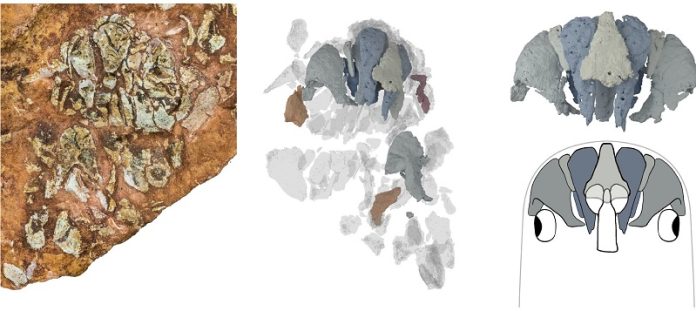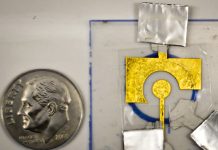
Scientists have discovered something amazing about a really, really old fish fossil.
This fossil helps us understand how the skulls of animals with backbones, like us humans, changed over time.
This is a big deal because it fills a 100-million-year gap in our understanding of skull evolution.
The fossil is 455 million years old and comes from a fish called Eriptychius americanus. Researchers from the University of Birmingham, the Natural History Museum, and the Naturalis Biodiversity Center in the Netherlands worked together on this project.
They found the fossil in some really ancient rocks in Colorado, USA.
Now, you might be asking, “How did they study a fossil that’s so old?” Well, they used a special X-ray technique, like a high-tech version of the X-rays you might get at a doctor’s office.
This helped them make a 3D model of the fish’s skull. It’s the first time anyone’s been able to create such a detailed model of this ancient fish’s head.
This fossil fish had a different kind of skull from what we see in fish today. Today’s fish, and other animals with backbones, usually have skulls made of one solid piece.
This old fish, however, had a skull made up of several separate pieces. These pieces were made of cartilage, the same stuff you find in your nose and ears.
Dr. Ivan Sansom, who’s a big shot in studying old living things at the University of Birmingham, said this is really exciting.
He said it might show us how the earliest animals with backbones started protecting their brains. This fish seems to be the first one with pieces of cartilage that separate the brain from the rest of its head.
Another scientist, Dr. Richard Dearden from Naturalis Biodiversity Center, also talked about how special this fish is. He said that even though the fossil might not look like much at first, it’s actually really important.
The fish’s skull is the oldest one we’ve ever found that’s still in 3D. This helps us understand how all animals with backbones, including humans, ended up with the skulls we have today.
In short, this fish is like a missing puzzle piece in the big picture of how skulls evolved over millions of years. And who knows?
This discovery could help scientists make even more discoveries about how we all came to be the way we are today.
Follow us on Twitter for more articles about this topic.



